We are increasingly seeing Tulbaghia in our pots or gardens. This charming perennial plant features mauve or white flowers, delicately held high on sturdy stems, and has fine, ribbon-like, semi-evergreen foliage. It is often found in seaside gardens and is very ornamental on a terrace. A third quality, and by no means the least, is that Tulbaghia is part of the edible plants, and its garlicky flavour is a delightful addition to summer salads and other culinary preparations.
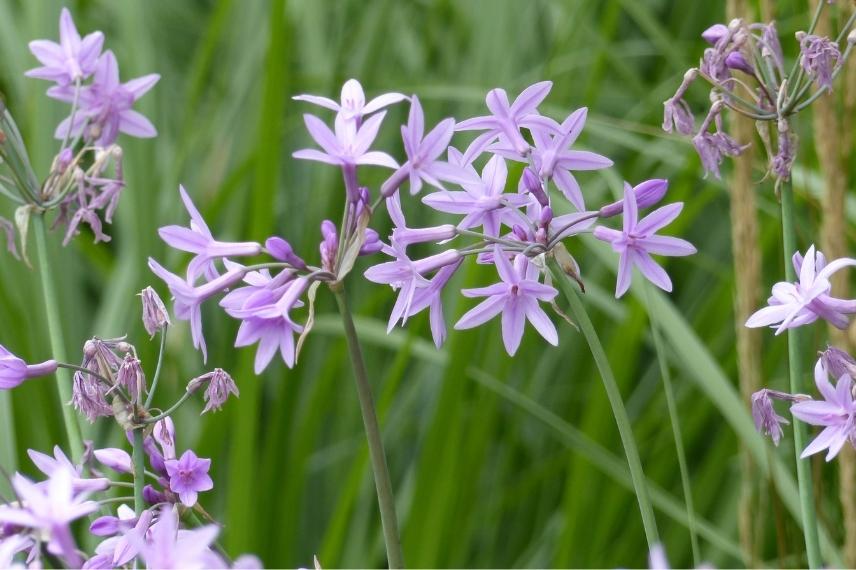
A few words about Tulbaghia
Tulbaghia or society garlic originates from South Africa and includes no fewer than 26 species, including Tulbaghia violacea, the most common in our gardens. This perennial plant is actually a bulbous plant, belonging to the same family as Amaryllis, Alliums, and Agapanthus, which it resembles in miniature form. It has fine, lanceolate foliage and delicate flowering in white or often mauve hues. It is among the flowers with the longest flowering period in the garden, displaying its lovely little umbels from June until the frost.
Tulbaghia is relatively hardy and can withstand temperatures dropping to -7°C for short periods. It also tolerates salt spray very well. Choose sunny locations for this plant, which does not fear drought once established. It is thus perfect for Mediterranean gardens, gravel gardens or dry gardens, along pathways, or to accompany other perennials in a mixed border, but it is also very attractive in pots. Retaining its foliage when planted in mild climates, it loses it elsewhere, but it reappears in the spring.
Simply cutting the spent stems or touching the foliage releases a strong garlic scent. It can be planted in ornamental gardens, on balconies or terraces, or even in the vegetable garden, where it will act as a companion plant, serving as a natural aphid repellent.
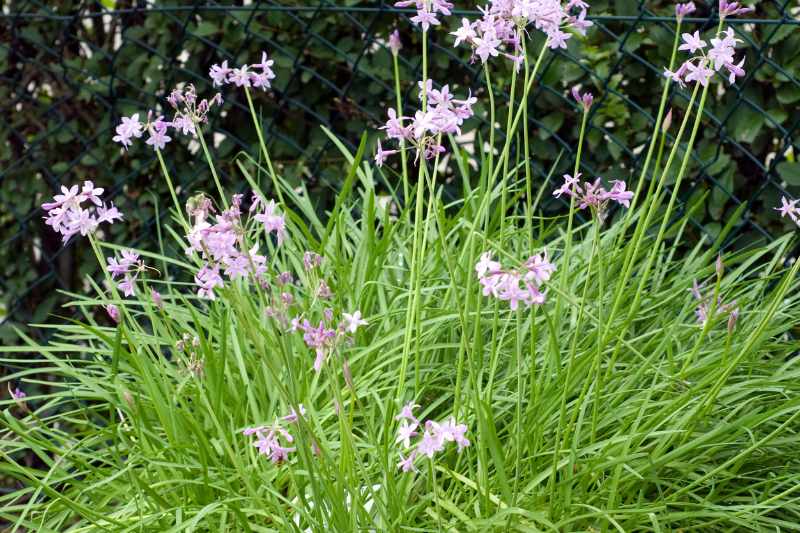
Which Tulbaghia to choose for cooking?
People often wonder whether specific varieties can be used for consumption or if only the typical species should be cultivated for culinary purposes. The typical species is often preferred, as the flavour is generally more intense (Tulbaghia violacea in our case). However, with Tulbaghia, popular varieties such as 'Kilimanjaro' or the variegated variety 'Variegata' can also be used.
When to harvest Tulbaghia?
Tulbaghia can be harvested almost all year round when living in a mild climate (Atlantic fringe, Mediterranean coast). It is the persistent leaves that will be used in cooking, but they are mainly used during the warmer months. The flowers appear between May and October, allowing for their use over several months in dish preparation or for final plating.
However, avoid cutting too much foliage, as this would weaken the plant. Therefore, harvest leaves from different plants, and remember that a small amount is sufficient to give dishes a pronounced aromatic note!
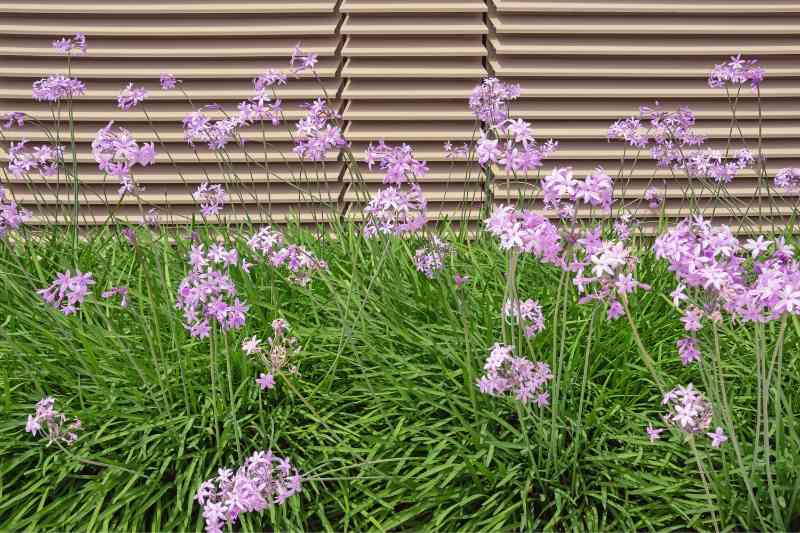
How to store Tulbaghia?
As with most herbs, freshness is crucial to maintain the plant's flavour. To prevent them from degrading quickly, use freshly cut Tulbaghia leaves as needed. They do not store well in the fridge or freezer, becoming limp, darker... and less presentable.
Using Tulbaghia in cooking
We just mentioned chives, and you can ultimately use Tulbaghia leaves as you would chive leaves.
- Raw leaves
This is the best way to preserve all the aromatic qualities of Tulbaghia. Therefore, add them at the end of preparation. Use Tulbaghia leaves as a finely chopped herb in your salads: they give a little kick to a simple tomato salad and can enhance most raw vegetables with their garlicky flavour.
Here are a few other uses where Tulbaghia adds a herby note:
- in a salmorejo, this thick cold Spanish soup from Cordoba that I adore, without cooking, by reducing the amount of garlic
- in a sauce, a vinaigrette
- in pesto, like a wild garlic pesto, replacing basil or mixed with other herbs like parsley or radish greens for a milder result
- to prepare English garlic bread (garlic bread warmed slightly in the oven) or on bruschettas
- in compound butter to thicken a sauce, again slightly warmed, which does not alter it.
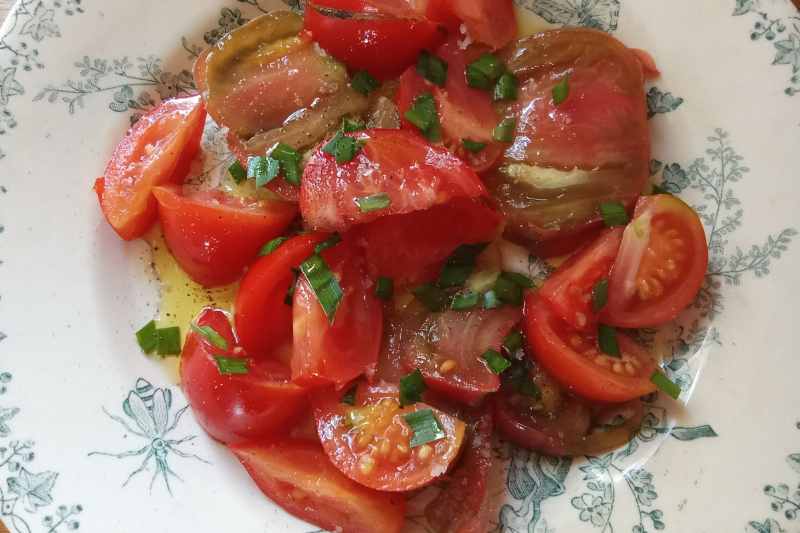
The vegetables that pair best with it are summer vegetables: tomatoes and courgettes, but potatoes or grated carrots are transformed by its subtle garlicky taste.
The flowers are always consumed raw. They have a garlic flavour, but less pronounced than the foliage. They mainly add a decorative touch to plate presentation, and for this use, I recommend the mauve to violet flowers that add a lot of elegance.
Discover how to enhance Tulbaghia flowers with the very simple and refined recipe by French chef Alain Passard, the Summer onion fondue and Tulbaghia flower in rice paper (in French).































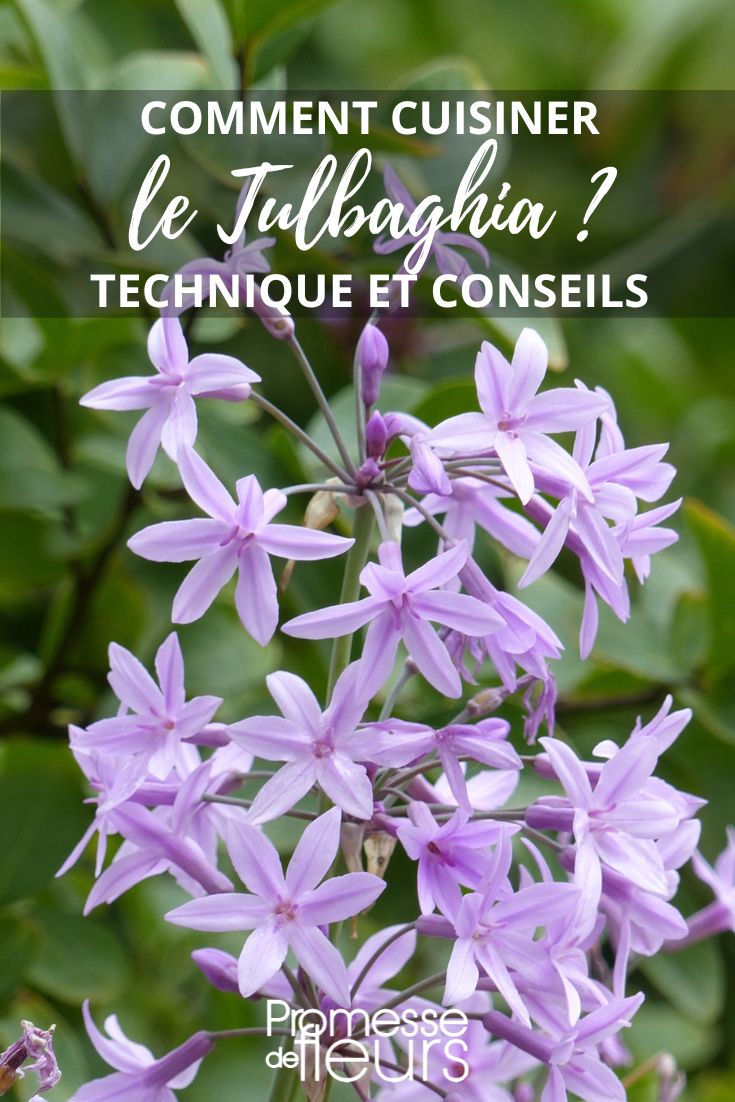
Comments